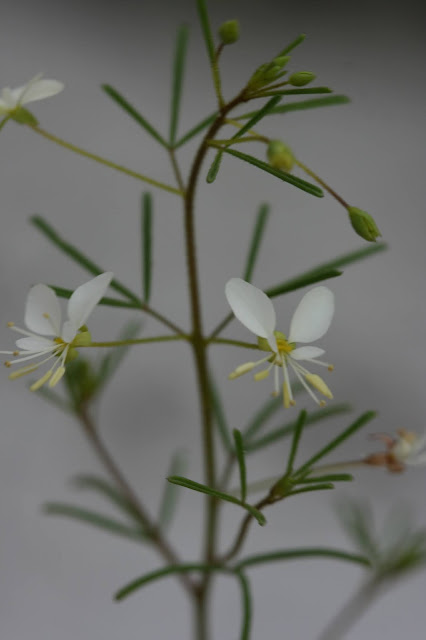Pineland catchfly (Polanisia tenuifolia) is a common plant of central Florida sandhills and scrub, though it is found also throughout these types of upland habitats in much of north and central peninsular Florida and has been reported in Georgia, Alabama and Mississippi. It is an annual, emerging from the seedbank in early spring and maturing quickly to flowering age by late spring to late summer.
This is a very slender plant (it's other common name, slender clammyweed, reflects this) that reaches about three feet in height. Very narrow, 3-parted leaves line the stem. They are about 1-2 inches long. The stems branch frequently and the white flowers are produced at the ends of each. Each flower is about 1/2 inch wide. The two upper petals are quite noticeable while the lower three are reduced in size. They seem to be mostly pollinated by bees.
The common name of "catchfly" is due to the fact that small insects can be trapped in the somewhat viscid secretions of the stems and leaves. It is not considered insectivorous, however, in the true sense. The purpose of this trait is not well documented and may be similar to tarflower (Bejaria racemosa) where it seems to protect the plant from small sap-sucking insects that would otherwise damage the flowers.
Pineland catchfly is an interesting species that is easily overlooked when not in bloom, but its growth habitat does not lend itself well to most landscape applications. I have never seen it offered for sale by any of the nurseries affiliated with FANN - the Florida Association of Native Nurseries or by other native nurseries in other states where it occurs. It is simply a plant to admire when hiking during the early summer in well-drained upland habitats.






No comments:
Post a Comment
Please let me know if this site and the various postings have been useful to you.